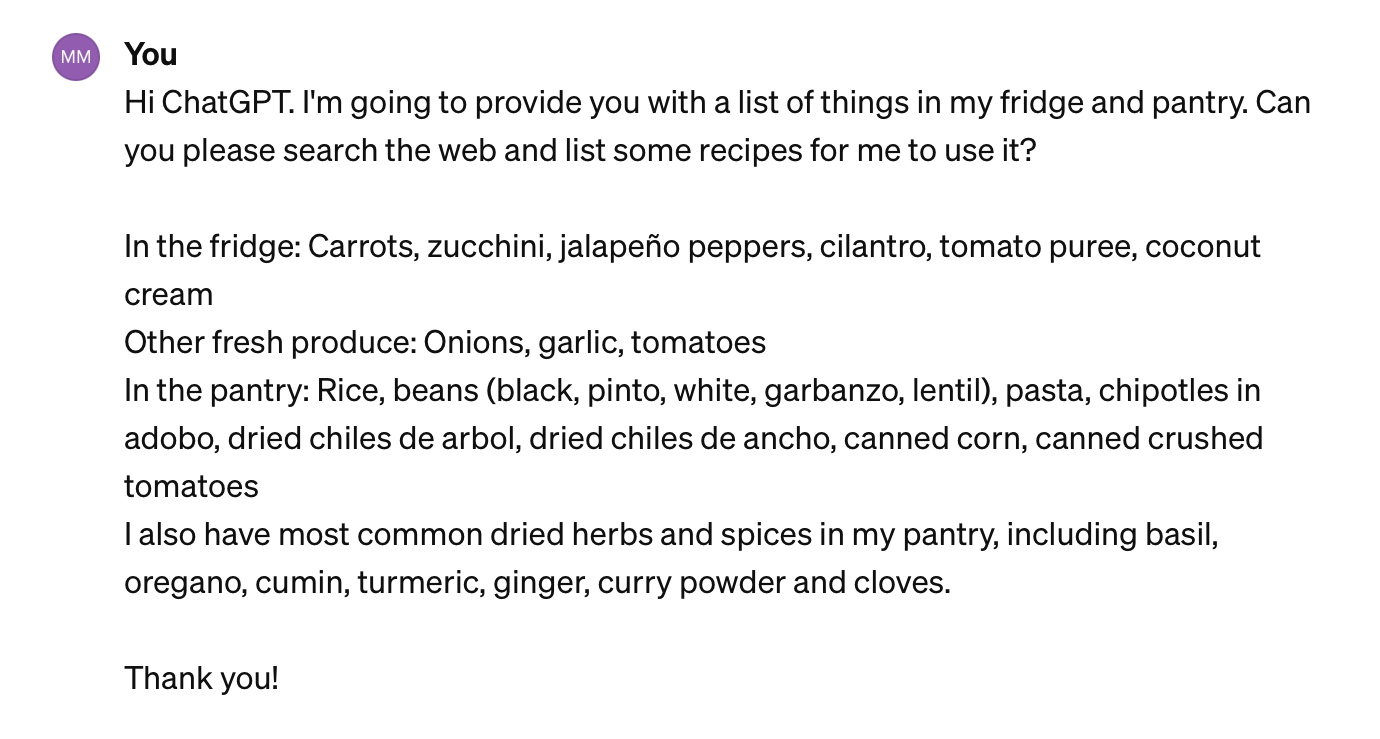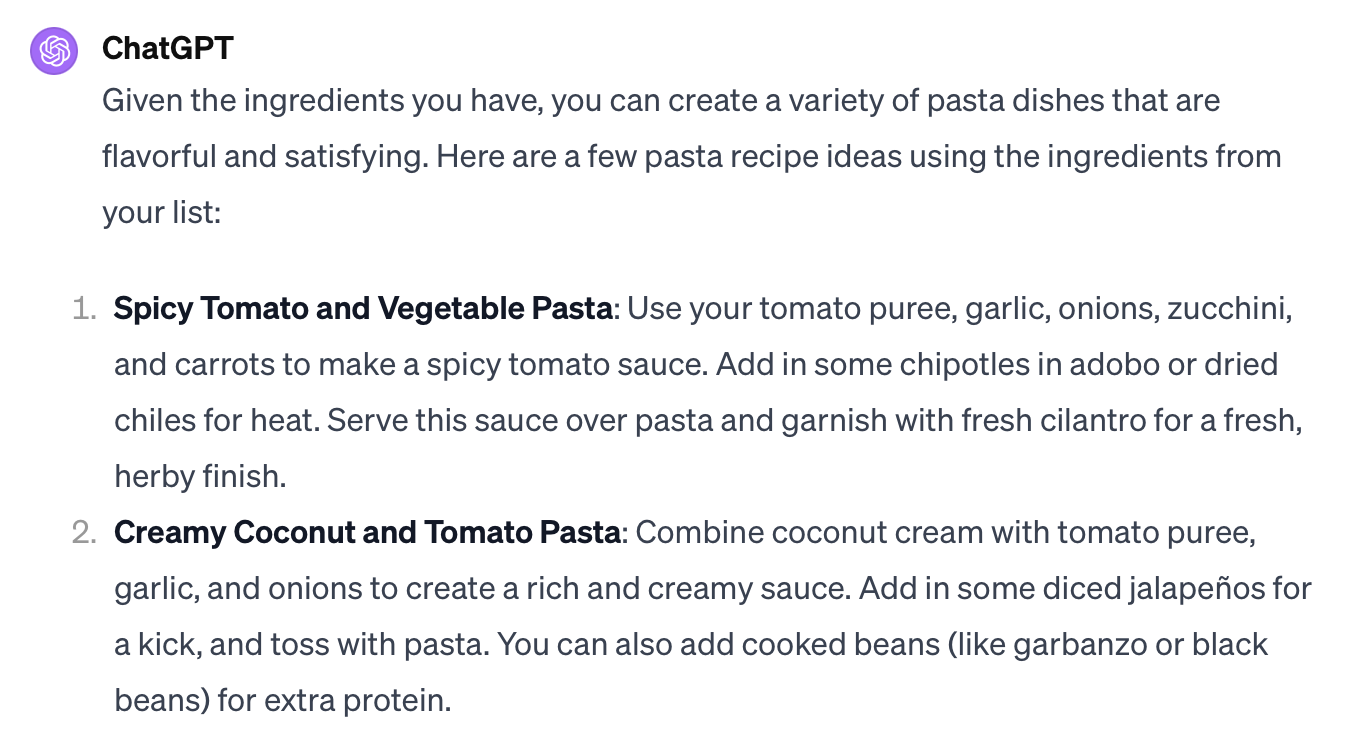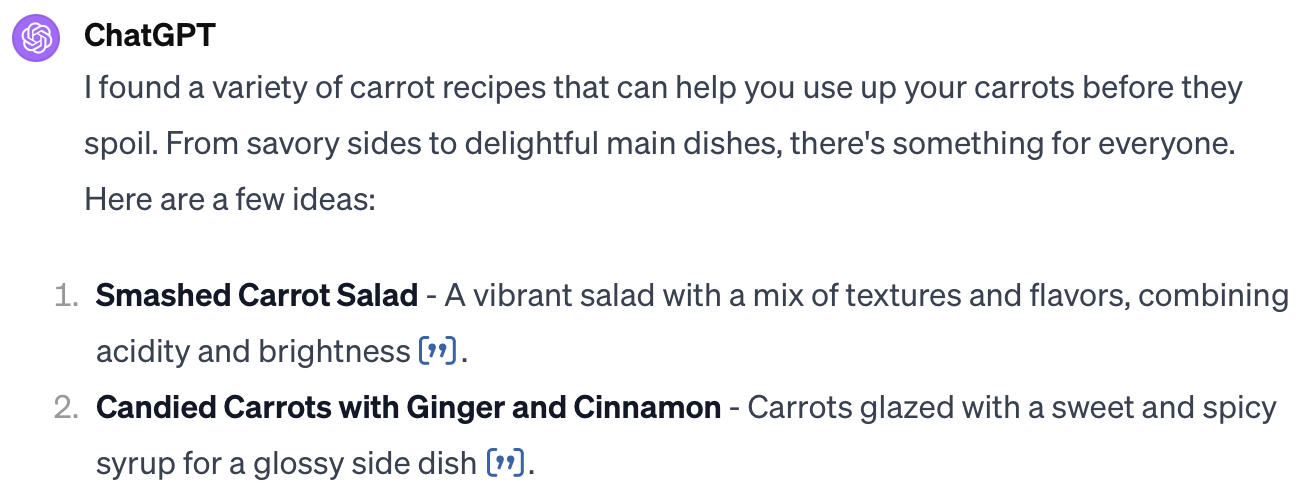
Some spicy black bean soup I made with the help of ChatGPT.
We heard through the grapevine that everyone's favorite digital assistant, ChatGPT, is also a powerful ally for reducing food waste at home. I for one was a bit skeptical. It seems you can't shake a stick these days without hitting a new artificial intelligence tool that promises the world but often fails to deliver. Can the AI chatbot really help us throw less in the bin? We gave it a try to find out.
How to reduce food waste with ChatGPT
As internet buzz tells it, you can enter your latest grocery haul, the contents of your fridge or items nearing spoilage into ChatGPT, and it will crawl the web for recipes to help you use them up. This isn't a new concept: Apps like SuperCook also provide recipes based on what's in your fridge, and databases like Allrecipes and Big Oven aggregate recipes specifically for using up leftovers. Fancy smart refrigerators can even scan your food and warn you when something could be on the verge of going bad.
But let's be real, not everyone can afford a $4,000 fridge, and it can be tedious to select ingredients manually from apps or scroll through large databases to find something that looks good to you. The notion of automating the search and getting straight to the good stuff is promising, especially if you use speech-to-text to rattle off your ingredients into ChatGPT as you look through your fridge.
Does it really work?
For my first try, I gave ChatGPT a pretty tough task. Since I just moved apartments and mostly skipped the grocery store for a couple weeks in preparation, I had very little in my fridge and pantry. I gave it a go anyway (don't judge me for saying please and thank you to a machine — if these things eventually outsmart us, they may as well think we're nice).

I kept the prompt pretty simplistic, and also didn't get super specific about things like spices or basics like oil, vinegar, sugar and flour to see what it could do with less drafting work. The first response yielded five recipes, including a carrot and jalapeno soup I'm pretty excited for and two curries similar to recipes I make at home often. ChatGPT offered descriptions and links to each recipe online, and they all include things like oil and salt (which I didn't specifically mention) so you don't miss anything by not taking the time to list basic staples individually.
Not a bad start, but I was looking for more diversity, so I asked a short and simple follow-up: "Can you list some more recipes with the same ingredients?" This time, seven recipes came back — including a pickled jalapeno and carrot concoction I'm curious to try and a few versatile side dishes featuring the bit of produce I had on hand.
But it seemed it could do more to really make use of everything. Since it hadn't mentioned pasta yet, I gave that a try: "Can you list some pasta recipes using these ingredients?" For this one, the responses changed. Rather than a description of each recipe with a link, ChatGPT listed high-level instructions for six recipes within the chatbox.

Since I cook at home pretty often, I could probably make these dishes using only these instructions, but many would benefit from more detail, so this breakdown when asking a few follow-up questions from the same ingredient list is a clear drawback. I copied my list and started a fresh chat with some more guidance.
 The links were back, but the responses weren't as accurate as I'd hoped from a more specific prompt. Curiously, though I mentioned soups rather than pastas this time around, ChatGPT suggested two pasta dishes and no soups. It also ignored my request for 20 recipes and only listed seven.
The links were back, but the responses weren't as accurate as I'd hoped from a more specific prompt. Curiously, though I mentioned soups rather than pastas this time around, ChatGPT suggested two pasta dishes and no soups. It also ignored my request for 20 recipes and only listed seven.
Still, it was working from a pretty limited list of ingredients, and I was curious how it could perform with some more to choose from. After our first trip to the grocery store post-move, I headed back to ChatGPT to give it another go. I added a wider selection veg, including broccoli, cauliflower, potatoes and cabbage, as well as some citrus fruits, fresh herbs, oat milk, and an expanded list of pantry items including soy sauce, nuts, and grains like quinoa and farro.
Surprisingly, a larger list didn't turn up more recipes. ChatGPT gave me five recipes to start with, although I asked for 20, the same amount it gave me when I had less stuff. To exhaust all my options, I tried the reverse and only gave it one ingredient that was on the edge of spoilage.
 This turned up a solid result without the bother of listing everything I had on hand: ChatGPT recommended eight ways for me to use up my neglected carrots, including links for each.
This turned up a solid result without the bother of listing everything I had on hand: ChatGPT recommended eight ways for me to use up my neglected carrots, including links for each.

Is it worth it?
It wasn't perfect, but I'd use it again. I got a decent variety of recipe ideas — with American, Italian, Mexican, Moroccan and Greek fare all making the list through my various exchanges — and I traded a full web search for a simple question that took less than a minute to draft.
It's worth noting: I used the same prompts on both the free GPT3.5 version and the paid version, GPT4, which costs $20 per month. Both worked, but GPT4 clearly outshines as GPT3.5 does not provide links for any of its responses.
If you already pay for GPT4, this is a solid option to take the guess-work out of cutting food waste, but I wouldn't say it's worth shelling out $20 a month unless you can also use ChatGPT for other things. Google's ChatGPT rival, Bard, also does pretty much the same thing for free (although sometimes links are missing), so there's that, too.
If anything, an exercise like this can teach us that even when we think "there's nothing in the house" to cook so we have to order takeout or head back to the store, we can often do more than we think with what we have on hand, helping us to save money, reduce waste and lighten our impact on the environment. Considering global food waste contributes more carbon emissions than most countries, it's certainly worth a try.
Into sustainable tips like these? Follow TriplePundit's 2024 Sustainable Living Challenge all year for affordable and accessible ideas to reduce your personal footprint. February is Home Month, where we dive into how to reduce our environmental impact at home and have a little fun while doing it.

Mary has reported on sustainability and social impact for over a decade and now serves as executive editor of TriplePundit. She is also the general manager of TriplePundit's Brand Studio, which has worked with dozens of organizations on sustainability storytelling, and VP of content for TriplePundit's parent company 3BL.














